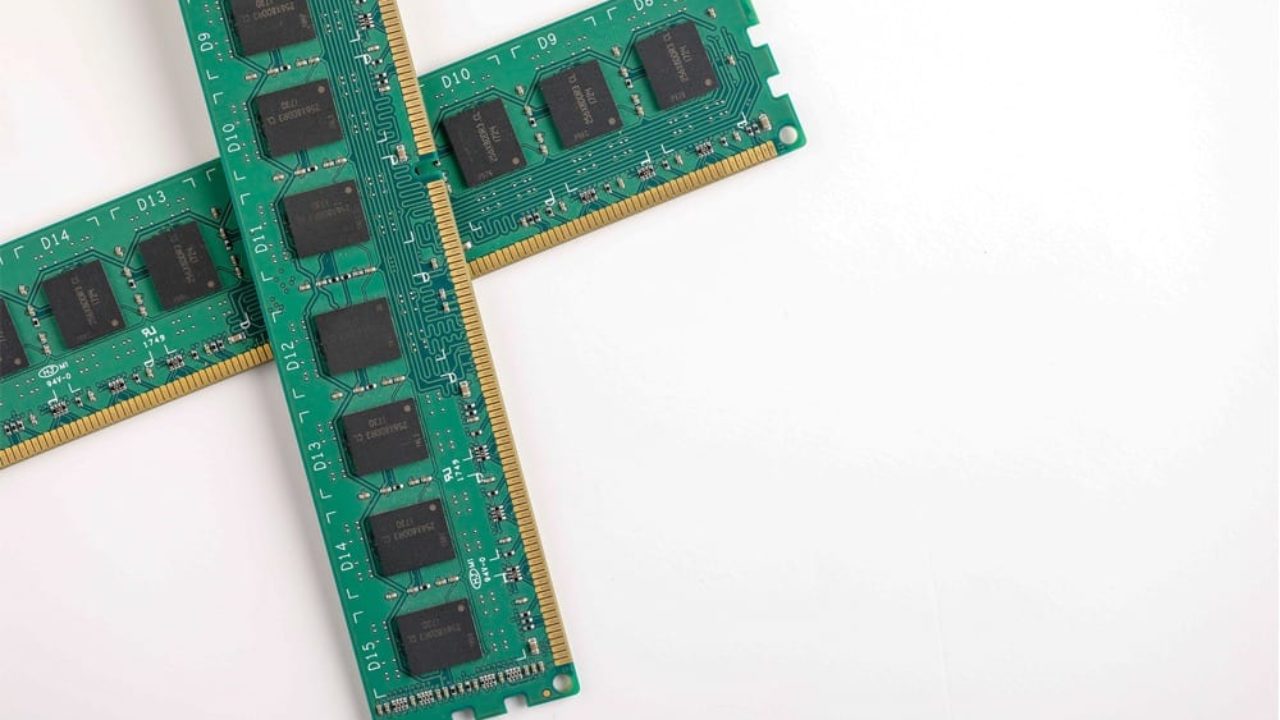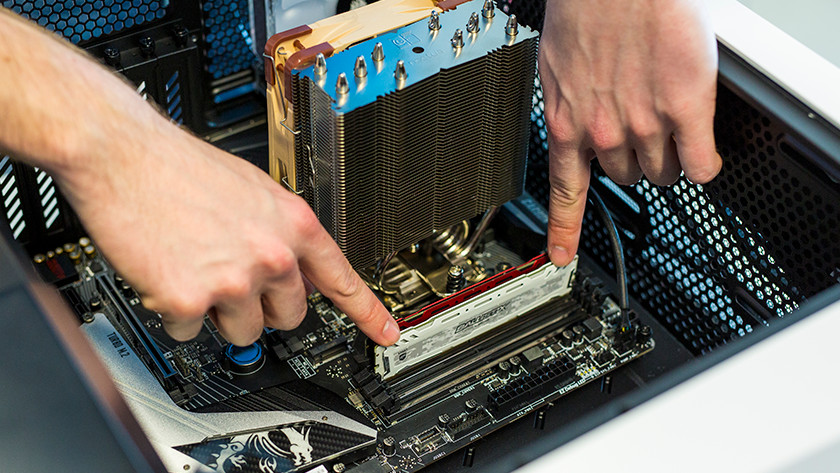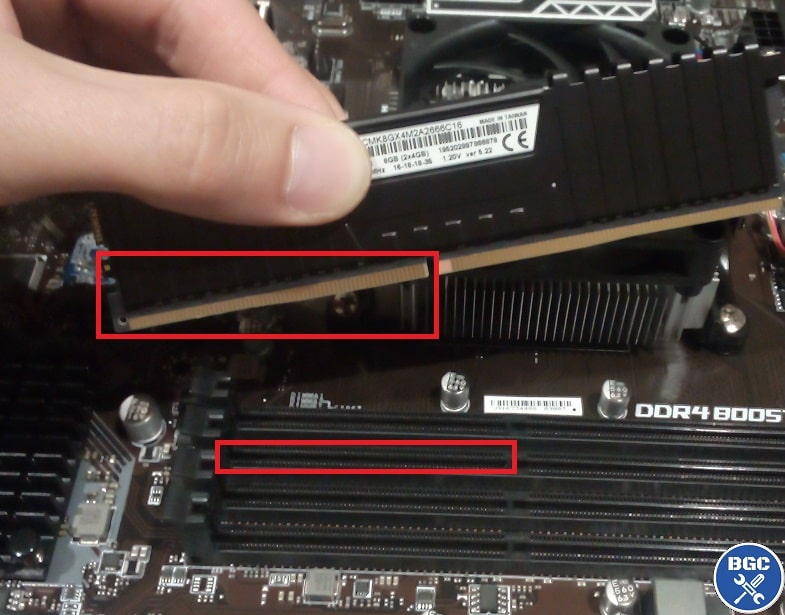Does It Matter What Slot You Put Your Ram In
Now that you’ve seated the RAM in the slot, toggle the plastic retention levers to lock your new memory modules in place. Thomas Ryan Snap the channel's toggle closed again to lock in your RAM. You are right about mixing different RAM modules — if there’s one thing you absolutely can’t mix, it’s DDR with DDR2, or DDR2 with DDR3 and so on (they won’t even fit in the same slots).
If you’re looking to build a gaming computer, your graphics card and processor will play the biggest role in your system’s in-game performance. After those two components, your memory will play the next biggest role in your system’s performance.
In this post, we’ll cover how to choose RAM for your computer. We’ve highlighted four different factors that you should consider when picking memory for your system.
Table of Contents
How Much RAM Do You Really Need?
- As you can see from my post just below this one my computer is fried. My roomate has a Intel computer and I was wondering if i can take the RAM from my AMD system and put it into his computer.
- Not all RAM chips can mix and match the memory slot of your motherboard. For example, if your motherboard was designed for DDR4 RAM, the memory slots of your motherboard cannot fit other types of RAMs like DDR3. Besides, the motherboard memory slots usually are integrated into the board and cannot be changed.
The quick answer to this question is: most users will likely need 8GB-16GB of RAM.
But, the real answer is: it depends on what kind of system you’re building.


Are you building a high-end workstation PC for video editing/graphics design, etc.? Going with at least 16GB (or more, depending on your budget) would be a wise decision.
Are you building a budget-friendly gaming computer? 8GB is a good start for now.
Yes, there are games that are starting to utilize more than 8GB of RAM, but for the most part, 8GB will still get the job done. Not to mention, RAM is the easiest component in your PC to upgrade. If you have empty DIMM slots on your motherboard, upgrading to more memory is as simple as adding another stick to your system.
So, if you have a larger budget and you’re building a high-end gaming computer or workstation PC, then go with 16GB (or more) to start. If you’ve got a tighter budget, start with 8GB of RAM so that you don’t have to downgrade your CPU and GPU to accommodate more memory.
RAM Compatibility Issues to Be Aware Of
Not all RAM is compatible with every system. Here is a list of things to look for when considering a memory kit’s compatibility with your other components:
- DDR Generation
- Motherboard DIMM Slots
- CPU Heatsink Clearance
- Form Factor
DDR generation is important because older generation DDR memory will not work with motherboards that are built to support newer generation DDR memory and vice versa. You can’t put DDR3 memory in a motherboard that has DDR4 DIMM slots and you can’t put DDR4 memory in a motherboard that has DDR3 DIMM slots.
Speaking of motherboard DIMM slots, it’s also important that you note how many slots your motherboard has. Some smaller form-factor motherboards (micro-ATX and mini-ITX) only come with two DIMM slots. So, obviously, you can’t put a 4x4GB kit of memory in them. You can only have a maximum of two sticks of RAM in that instance. So, make sure you’re not buying more memory sticks than your motherboard can hold.
Certain memory kits can also have compatibility issues with certain CPU heatsinks. Big bulky air CPU coolers can often hang over DIMM slots. And, in some instances, they can prevent memory kits with tall heat spreaders from being installed. So, it’s a good idea to make sure that if you are choosing a big bulky air cooler and you are selecting RAM that has tall heat spreaders, that you check and make sure that your air cooler will not interfere with your RAM.
RAM form-factor is another important thing to consider. There are really only two main RAM form factors:
- DIMM: desktop form factor
- SO-DIMM: laptop form factor
All you really need to know here is that if you are building a new desktop PC, or upgrading an existing one, you’ll want to make sure you get DIMM form-factor RAM and not SO-DIMM RAM, as desktop motherboards are not compatible with SO-DIMM memory.
RAM Speed
There’s really just two components that determine the performance of a given memory kit: frequency and latency.
RAM frequency is similar to a CPUs frequency. The faster a memory kit’s frequency is, the faster the memory can process data.
Latency, on the other hand, is the time between when a system command is entered and when it is executed. The lower the latency, the faster the memory can move onto the next process.
Latency and frequency are linked together when determining the overall performance of a given kit of memory, but they are not the same thing.
In general, RAM with higher frequencies will play a bigger role in boosting system performance than will a kit with a lower frequency and a lower latency.
However, it’s also important to note that simply buying the fastest kit of memory on the market will not result in an increase in in-game performance. There is a point of diminishing returns where the faster the memory is, the less of a performance boost it will offer in comparison to a lower frequency.
This can vary, too, depending on how you are using your system and/or what kinds of games you are playing. RAM that operates at higher frequencies can provide performance increases in certain programs and games while having little to no effect on other programs and games.
So, really, in determining what RAM frequency is right for you, you need to evaluate the kinds of programs and games you will be running and determine whether or not faster memory will give you more performance when running them.
Remember, RAM is EASY to Upgrade
Does It Matter What Slot You Put Your Ram Install
Matching your RAM to the quality of your build is also important. You don’t want to put 16GB of RAM in a $500 gaming PC build, as the extra cost of going from 8GB to 16GB is going to mean that you have to downgrade on the components that will have a bigger impact on your in-game performance (like your graphics card and processor).
And, it’s important to remember that RAM is by far the easiest component in your system to upgrade. Because RAM is so easy to upgrade, if you’re working with a tight budget, it makes sense to not go overboard on the amount of memory when choosing components for your system.
To understand the reasoning behind this, consider this scenario…
You’re looking to build an entry-level gaming PC and you decide that you want to put 16GB of RAM in it. The difference between 8GB of RAM and 16GB of RAM is about ~$80. So, essentially, by choosing 8GB of RAM instead of 16GB of RAM, you’re taking $80 from your budget.
Since you’re already working with a tight budget, you probably won’t have room to sacrifice on your motherboard, power supply, and case. And, that really only leaves your CPU and GPU to downgrade in order to accommodate 16GB of RAM. So, you’re sacrificing in-game performance now, so that you can start with 16GB of RAM.
The problem with this is that, if you want to improve your in-game performance, you’ll have to completely replace your CPU and GPU. That means the money spent on your original CPU and GPU is lost (unless you recoup some of the losses by selling them used.)

However, by starting with 8GB of RAM and a better CPU and GPU combo, your first upgrade can be to 16GB of RAM, which will only cost you an additional $80. And, rather than replacing your old memory, all you have to do is add a new stick. So, you don’t lose the money you already put into the system as if you would if you were to upgrade your CPU and GPU.
So, despite a lot of people saying “you need 16GB of RAM for gaming now,” if you don’t have a large budget to spend on your build, starting out with 16GB of RAM is actually going to hurt your performance now, and make your upgrade process in the future more difficult.
Which RAM Will You Choose for Your PC?
Does It Matter What Slot You Put Your Ram Instead
For the most part, RAM is a pretty simple component to choose for your system. Your budget will dictate how much RAM you should get. If you have a tight budget, start out with 8GB of RAM, as that should hold you over just fine until you have enough money to add an additional 8GB of RAM.
Does It Matter What Slot You Put Your Ram Injectors
If you have a large budget, start with 16GB (or more).
Does It Matter What Slot You Put Your Ram Instrument
Then, depending on your specific use case, you might want to spend a little more (budget permitting) to get faster RAM with tighter timings.
Ultimately, though, the factors listed above should help you choose the right RAM for your budget and needs.